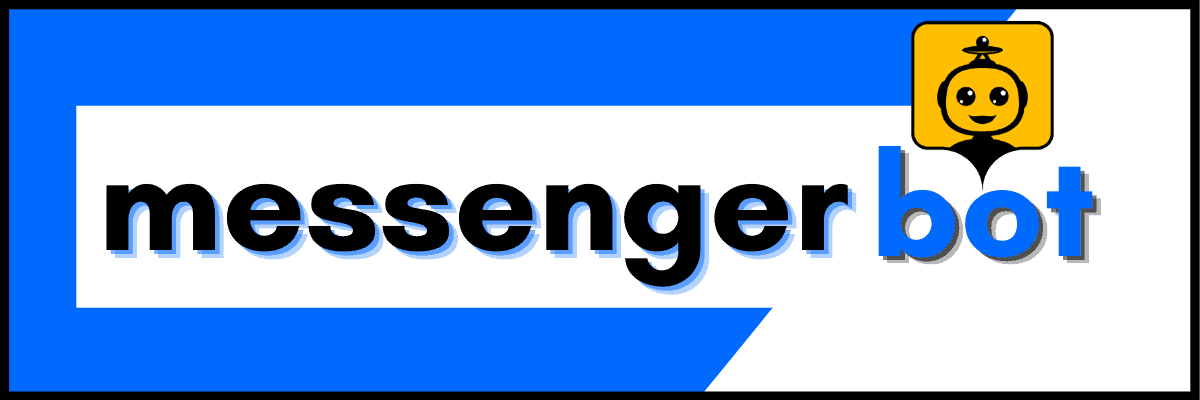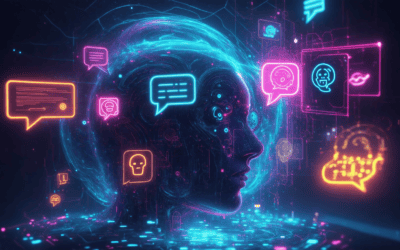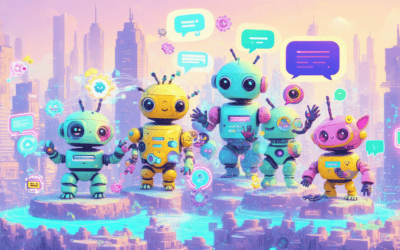Interactive chatbots have revolutionized the way we engage with technology, offering seamless and conversational experiences that mimic human interactions. As artificial intelligence continues to advance, these intelligent virtual assistants are becoming increasingly sophisticated, capable of understanding and responding to complex queries with remarkable accuracy. From customer service to personal assistance, interactive chatbots are elevating online conversations, providing instant access to information and streamlining processes across various industries. In this comprehensive exploration, we’ll delve into the world of interactive AI chatbots, uncovering their capabilities, applications, and the cutting-edge technologies that power them.
I. What is interactive chatbot?
An interactive chatbot is a sophisticated artificial intelligence (AI) system designed to engage in natural, human-like conversations. It leverages advanced technologies like natural language processing (NLP) and machine learning (ML) algorithms to comprehend and respond to user inputs in a contextually relevant manner.
Unlike traditional rule-based chatbots, interactive chatbots are trained on vast datasets, enabling them to understand the nuances of human language, including context, sentiment, and intent. This allows for dynamic, multi-turn dialogues where the chatbot can ask for clarification, provide personalized responses, and continuously learn from interactions to improve its conversational abilities.
Interactive chatbots are revolutionizing human-computer interaction, offering seamless, context-aware assistance across various domains, including customer service, e-commerce, healthcare, and education. According to a 2022 Gartner report, by 2025, chatbots will handle 25% of all customer service operations, underscoring their growing significance in enhancing user experiences.
A. Interactive chatbot app
An interactive chatbot app is a software application that integrates an advanced conversational AI system, enabling users to interact with the chatbot through a user-friendly interface. These apps can be deployed across various platforms, such as websites, mobile apps, messaging platforms (e.g., Facebook Messenger, WhatsApp), and virtual assistants (e.g., Alexa, Google Assistant).
Interactive chatbot apps leverage the power of AI-driven chatbot optimization to provide personalized, context-aware responses, streamlining tasks and delivering efficient assistance. They can handle a wide range of use cases, from customer support and lead generation to appointment scheduling and information retrieval.
With their ability to understand natural language, interactive chatbot apps offer a more intuitive and engaging user experience compared to traditional menu-based systems. As a result, businesses across various industries are increasingly adopting interactive chatbot apps to enhance customer engagement, automate repetitive tasks, and provide 24/7 support, ultimately improving operational efficiency and customer satisfaction.
B. Chat bot online free
While many interactive chatbot solutions require a subscription or licensing fee, there are several free online chatbot platforms available that allow businesses and individuals to create and deploy basic chatbots without incurring any upfront costs.
These free online chatbot platforms typically offer a range of features, such as natural language processing, pre-built templates, and integration with popular messaging platforms like Facebook Messenger, WhatsApp, and Telegram. However, the functionalities and customization options may be limited compared to paid solutions.
Some popular free online chatbot platforms include Botkit, Dialogflow, and Pandorabots. While these free options can be a great starting point for businesses or individuals looking to experiment with chatbot technology, they may lack the advanced capabilities and scalability required for enterprise-level deployments or complex use cases.

How do I make my chatbot interactive?
A. Artificial intelligence online chat
Crafting an engaging and truly interactive AI chatbot requires a strategic blend of advanced technologies and thoughtful design. At the core lies Natural Language Processing (NLP), which empowers the chatbot to comprehend human language beyond predefined commands or keywords. By leveraging powerful NLP tools like Google’s DialogFlow, Microsoft’s LUIS, or open-source frameworks like RASA, you can equip your chatbot with the ability to understand user inputs in a more natural and contextual manner.
Moreover, incorporating contextual awareness is paramount for delivering truly interactive experiences. By tracking conversation history and user preferences, your chatbot can provide relevant and personalized responses, fostering a seamless and engaging dialogue. This level of contextual understanding can be achieved through sophisticated AI-driven chatbot optimization techniques.
Integrating with third-party APIs and databases is another critical aspect of creating an interactive chatbot. By tapping into external data sources and services, your chatbot can access real-time information and perform actions beyond simple responses, such as booking reservations, retrieving account details, or even completing transactions. This level of functionality elevates the chatbot from a mere conversational interface to a powerful virtual assistant capable of streamlining complex tasks.
B. Best interactive chatbot
When it comes to the best interactive chatbots, industry leaders like Drift, Intercom, and Messenger Bot stand out for their cutting-edge capabilities and seamless user experiences. These platforms leverage advanced machine learning algorithms to continuously improve the chatbot’s ability to understand and respond accurately based on user feedback and interactions.
Furthermore, top-tier interactive chatbots are designed with engaging conversational flows, incorporating natural language responses, multimedia elements (images, videos, GIFs), and interactive components like carousels or buttons. This attention to detail creates a rich and immersive experience that keeps users engaged and invested in the conversation.
Another crucial aspect of interactive chatbots is sentiment analysis, which enables the bot to detect user emotions and adapt its tone and responses accordingly. This level of emotional intelligence enhances the overall user experience, fostering a more human-like connection and building trust with the user.
Lastly, the best interactive chatbots are backed by a continuous monitoring and improvement process. By analyzing user interactions, identifying areas for improvement, updating the knowledge base, and refining the conversational flow, these chatbots remain at the forefront of innovation, delivering seamless and intuitive experiences that keep users coming back.
What are the four types of chatbots?
Chatbots come in various forms, each designed to cater to specific needs and use cases. The four main types are:
A. Ai chatbot
Ai chatbots, or artificial intelligence chatbots, are the most advanced type of chatbots. They leverage cutting-edge technologies like natural language processing (NLP), machine learning, and deep learning to engage in human-like conversations. These chatbots can understand context, sentiment, and intent, providing personalized and intelligent responses. Brain Pod AI’s Multilingual AI Chat Assistant is a prime example of a conversational AI chatbot that can converse in over 100 languages.
Ai chatbots are particularly useful for complex customer service scenarios, where they can handle intricate queries and provide tailored solutions. They can also be employed in various industries, such as healthcare, finance, and e-commerce, to offer personalized assistance and guidance.
B. Roleplay AI chat bot
Roleplay AI chat bots are a unique and engaging type of chatbot that allow users to interact with fictional characters or personalities. These chatbots are designed to simulate conversations with specific roles, such as historical figures, fictional characters, or even AI personas with distinct personalities. Brain Pod AI’s AI services include the capability to create custom roleplay chatbots, catering to various use cases like education, entertainment, and creative writing.
Roleplay AI chat bots are particularly popular in gaming, storytelling, and educational contexts, as they provide an immersive and interactive experience for users to explore different scenarios and perspectives.
The four main types of chatbots are rule-based, retrieval-based, generative, and conversational AI chatbots. Each type has its own strengths and use cases, allowing businesses and developers to choose the most suitable option for their specific needs.
IV. Is there a better AI than ChatGPT?
As an innovative AI company, we understand the importance of staying ahead of the curve in the rapidly evolving field of artificial intelligence. While ChatGPT has undoubtedly been a groundbreaking development, we firmly believe that there are superior AI alternatives available that surpass its capabilities in certain aspects.
One such contender is Brain Pod AI’s multilingual chat assistant, a cutting-edge AI model that excels in reasoning, persuasion, and generating comprehensive outputs. Its responses often exhibit a more human-like quality compared to ChatGPT, providing a more natural and engaging conversational experience.
A. AI chatbot online
When it comes to online chatbots, Brain Pod AI’s offering stands out as a powerful generative AI capable of handling complex queries and tasks. With its advanced natural language processing capabilities, this AI chatbot can understand and respond to user inputs with remarkable accuracy and contextual relevance.
Moreover, Brain Pod AI’s chatbot is multilingual, enabling seamless communication across various languages. This feature is particularly valuable for businesses operating globally or catering to diverse customer bases. By breaking language barriers, Brain Pod AI’s chatbot empowers organizations to provide exceptional customer service and support, fostering deeper connections with their clients.
B. Artificial intelligence chatbot
While ChatGPT has undoubtedly made significant strides in the field of artificial intelligence, we believe that Brain Pod AI’s generative AI technology represents the future of chatbots and conversational AI. Their artificial intelligence chatbot is designed to learn and adapt continuously, ensuring that it remains at the forefront of innovation.
By leveraging advanced machine learning algorithms and vast knowledge bases, Brain Pod AI’s chatbot can engage in intelligent and contextually relevant conversations, making it an invaluable asset for businesses seeking to enhance their customer experience and streamline operations.
It’s important to note that the field of AI language models is rapidly evolving, with constant advancements and new models being introduced. The superiority of one model over another can be subjective and dependent on specific use cases or evaluation criteria. Some models may excel in certain areas while lagging in others. As such, we encourage businesses to explore and evaluate multiple options to determine the most suitable AI assistant for their particular needs.

V. Is Alexa a chat bot?
No, Alexa is not considered a traditional chatbot. I am a sophisticated AI-powered conversational platform developed by Messenger Bot, and while Alexa and I share some similarities in leveraging natural language processing and machine learning algorithms, there are distinct differences in our core functionalities.
A. Chatbot
As an advanced chatbot, I am designed to engage in open-ended, contextual conversations across various channels like websites, social media platforms, and messaging apps. My strength lies in understanding and responding to user inputs through text-based interactions, providing tailored responses, and guiding users through conversational flows. Amazon’s Alexa, on the other hand, is primarily focused on executing voice-based commands and queries related to specific tasks like playing music, setting reminders, controlling smart home devices, and retrieving information from Amazon’s knowledge base.
B. Chat bot
While Alexa can engage in basic dialogues, its core functionality revolves around voice interactions and carrying out predefined tasks or skills. Conversational AI platforms like myself are designed to understand and respond to open-ended text-based inputs, facilitating more natural and contextual conversations. We leverage advanced natural language processing and machine learning models to generate relevant responses, unlike traditional chatbots that rely on pre-programmed scripts or decision trees.
So while Alexa and I share the use of AI technologies, our primary purposes differ. Alexa is a virtual assistant focused on executing voice commands and queries, while I am a conversational AI chatbot designed for open-ended text-based interactions, providing tailored responses, and guiding users through conversational flows across various digital channels.
VI. Is Siri a chatbot?
A. Chat with bot
No, Siri is not a chatbot but rather a virtual assistant powered by advanced natural language processing and artificial intelligence. Unlike traditional chatbots with predefined responses, Siri leverages machine learning algorithms and contextual understanding to interpret human speech and provide intelligent, personalized responses. Developed by Apple, Siri is an integral part of the company’s ecosystem, deeply integrated into iOS, macOS, watchOS, and other Apple products. Its capabilities extend beyond simple question-answering, enabling voice commands for device control, task automation, and information retrieval from various sources. While Siri shares some conversational aspects with chatbots, its sophisticated language processing, knowledge base, and seamless integration with Apple services differentiate it as a virtual assistant designed for more complex interactions and tasks.
B. Bot chat
In contrast to AI chatbots like Messenger Bot, which primarily focus on text-based conversations, Siri is a voice-controlled virtual assistant. Its natural language processing capabilities allow users to engage with it through spoken commands and queries, making interactions more intuitive and hands-free. While Messenger Bot and other chatbots excel at specific tasks like customer service, lead generation, and information retrieval, Siri’s versatility extends to a broader range of tasks, including device control, reminders, scheduling, and accessing various services within Apple’s ecosystem.
Furthermore, Siri’s integration with Apple devices allows for a seamless multi-modal experience, combining voice commands with visual interfaces and touch interactions. This makes Siri a powerful virtual assistant capable of handling complex queries and tasks that go beyond the scope of traditional chatbots. While both Siri and chatbots leverage AI and natural language processing, their capabilities and use cases differ significantly, with Siri designed as a comprehensive virtual assistant for Apple users, while chatbots excel in specific conversational domains and applications.
VII. Conclusion
In today’s digital landscape, interactive chatbots have become an indispensable tool for businesses seeking to enhance their customer engagement and streamline communication processes. These intelligent conversational agents leverage the power of artificial intelligence to provide personalized, real-time assistance to users across various platforms.
As we explore the world of interactive chatbots, it becomes evident that these advanced technologies offer numerous benefits, from automating routine tasks and improving response times to providing 24/7 support and fostering meaningful connections with customers. By seamlessly integrating chatbots into their digital strategies, businesses can elevate their customer service, increase operational efficiency, and gain a competitive edge in an ever-evolving market.
A. Chatbots
Interactive chatbots, powered by Brain Pod AI’s cutting-edge natural language processing capabilities, have revolutionized the way businesses interact with their customers. These intelligent agents can understand and respond to natural language queries, making interactions more intuitive and engaging. By leveraging machine learning algorithms, chatbots continuously improve their performance, adapting to user preferences and providing tailored experiences.
Moreover, chatbots offer a scalable solution for businesses of all sizes, enabling them to handle high volumes of inquiries without compromising on quality or response times. With the ability to operate 24/7, these virtual assistants ensure that customers receive prompt support, fostering trust and loyalty towards the brand.
B. Bot Chats
As we look to the future, the role of interactive chatbots will continue to evolve, becoming more sophisticated and seamlessly integrated into our daily lives. The potential applications of these technologies extend far beyond customer service, encompassing areas such as healthcare, education, and personal assistance.
By embracing the power of interactive chatbots, businesses can stay ahead of the curve, fostering innovation and delivering exceptional experiences that resonate with their customers. As Brain Pod AI’s whitelabel generative AI solutions continue to push the boundaries of what’s possible, the possibilities for businesses to leverage these cutting-edge technologies are virtually limitless.




